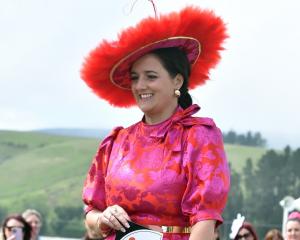One woman's passion meant Irish lace flourished on Otago's Pigroot, writes Jane Malthus.
Margaret Brenda Bell was born at Shag Valley Station in 1891 and grew up in the Pigroot area.
Her parents were Alfred Dillon Bell and his wife Gertrude Eliza Robinson, and she had one younger brother.
Her father's interest in telephone and wireless communication rubbed off on Brenda, but at a young age she also fell in love with lace, and started collecting examples of various designs and kinds of lace.
Brenda spent at least part of World War 1 in London working as a cook for the troops and as a hostess at New Zealand's High Commission, and in World War 2 worked in Britain as a military cook and nurse with the Voluntary Aid Detachment.
In New Zealand she was a prominent member of the Country Women's Institute and an associate member of the University of Otago home science alumnae, in part because of interests in both meal preparation and textiles, especially the Irish regional embroidery called Carrickmacross lace.
Lace is a delicate open-patterned fabric made of yarns or threads and fabricated either by hand or machine.
Handmade lace is usually made using either bobbins that hold the thread, and pins to hold the design on a special cushion, or by using needle and thread to cover threads with lots of stitches to make the design.
Some fabrics called laces are actually embroideries, where threads are inserted into already existing fabrics.
Carrickmacross is referred to as a lace but is not made in the same way as bobbin or needle laces.
Instead couching, stitching, cutting and embroidery techniques are employed to hold appliqued layers of fine net and muslin together in intricately designed patterns.
Brenda was fascinated by this kind of applique lace and learned to make it, thanks in part to her aunt Jessy Mackenzie who helped her with materials and techniques.
Mrs Mackenzie had learnt Carrickmacross techniques in the UK and befriended workers who gave her designs not available in shops, which she passed on to Brenda.
Brenda also purchased some of her materials and designs for Carrickmacross from a specialty shop on the Edgeware Rd in London.
Brenda eventually became a very skilled maker.
Her collection of lace and Carrickmacross is now in Otago Museum and shows her development from near beginner to expert.
The town of Carrickmacross in County Monaghan, Ireland, gave its name to this decorative net and muslin applique because it was developed there in the 1820s.
After the 1846 potato famine a lace school set up on estates at Carrickmacross enabled starving tenants to raise some funds by selling their work.
This further popularised the technique and the lace. Many of New Zealand's Irish immigrants came from counties in this part of Ireland near the Northern Ireland border and may have brought their Carrickmacross lace skills, designs and examples with them.
Designers of Carrickmacross drew their patterns in Indian ink on to ciré cloth, a glazed cotton fabric, which were then available for purchase by potential makers.
The ciré cloth pattern was first basted on to a backing fabric to stiffen it a little, then layers of good quality machine-made net and fine muslin were tacked on to it so the pattern could be seen through these layers.
Photograms, made by exposing existing lace directly on to photographic paper, were another way of making patterns to use for Carrickmacross.
The lace maker/embroiderer couched thick outlining thread through the layers of muslin and net along the lines of the pattern using a finer thread to hold the outline in place.
The thick thread was also used to make loops called twirls along the outer edge of the design.
The maker then chose portions of the muslin and or the net to cut away, and finally embroidered some areas to embellish the design.
Nineteenth and early 20th-century designs for Carrickmacross were mostly inspired by nature: stylised plants, flowers, stems and leaves lent themselves to the technique, and were favoured by the fashion of the time.
Brenda kept track of her progress on the photogram design on the back of the ciré cloth until she finished enough for a flounce on a cape that she wore over a white evening dress.
She showed off the cape in Belfast, where it apparently attracted the compliments of locals who made similar lace.
However, in the notes she left with her lace collection when she gifted it, Brenda commented that even as she was making it, this kind of lace and garment was going out of fashion.
Modernism was overtaking Edwardian ideas about decorative embellishments.
Brenda stopped making lace in her late 30s.
More recently, designers of Carrickmacross patterns have used insects, birds, animals and human figures, and symbolic shapes such as hearts and rings, since such time-consuming work is often made for special clothes and events such as weddings and christenings.
Catherine, Duchess of Cambridge, and Princess Diana both had Carrickmacross lace on their wedding dresses or veils.
Some makers are even introducing coloured net or muslin, rather than the traditional cream or white.
Brenda Bell, who died in 1979, has other claims to fame: because of her father and brother's interest in wireless communication, she was New Zealand's first female amateur radio operator, and she was the first New Zealander to make radio contact with South Africa in 1927.
You can read about Brenda and her brother's radio firsts online at Te Ara, the Encyclopedia of New Zealand.
• Jane Malthus is a dress historian and senior lecturer, Otago Polytechnic School of Design.













